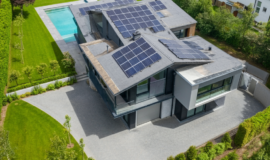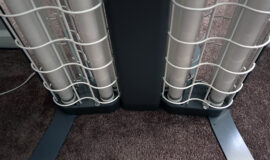A Wave of Energy
Tidal energy is a form of renewable energy that is produced during the rise and fall of tides. Engineers developed ways to implement tidal energy back in the 20th century. Every solution uses a specific type of generators for the conversion of tidal energy into electricity.
Even though the concept of implementing tidal energy has been around for a while, it is still not widely used. In this article we are going to say something more about the ways of using tidal energy.
Nowadays, there are a couple of ways of getting tidal energy: tidal streams, tidal lagoons, barrages and tidal fences.
Tidal streams
Tidal streams use the same type of turbines as traditional wind turbines (with a horizontal axis). However, the power generated from tidal stream generator is greater than a wind turbine because water has higher density than air. And also, tidal energy is a more stable energy source than wind energy since tides are more predictable.
Tidal stream turbines have a very low visual impact and they also produce less noise pollution. Another advantage of these types of tidal energy solutions is that their cost is the lowest compared to the other ones.
Tidal lagoons
A tidal lagoon is a solution for using tidal energy by capturing a big volume of water behind a man-made structure which is later released to move turbines and generate electricity. As the wave comes, the water is held back by the turbine gates, which control the water coming to the turbine and can also be used to completely stop water entering the turbine. This way, a difference in water height is formed between the inside of the lagoon and the sea or other water body. Once the optimization of this height difference is formed, the gates open and water rushes into the lagoon and through the turbines and as the turbines turn, electricity is produced.
Tidal barrages
Tidal barrages are the most efficient tidal energy sources. Tidal barrages work in a similar way that tidal lagoons do. They use a large dam for the process of taking in tidal energy and the water goes through the turbines or over the dam because the dam is low. When the tide rises, the gates of the barrage are open. When the tide reaches a certain height, the gates close, creating a tidal lagoon or a pool. Then the water is released through the turbines creating electricity.





